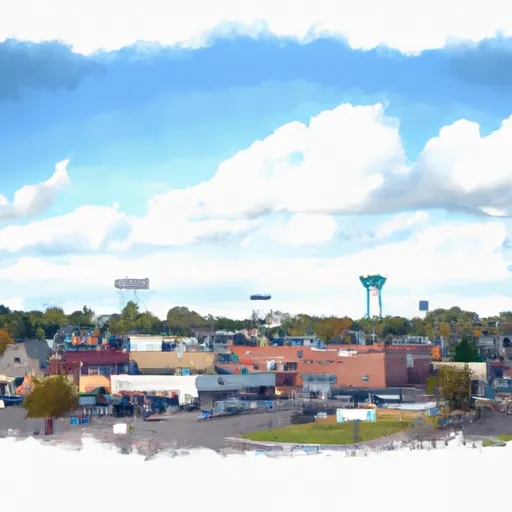-
 Snoflo Premium
Snoflo Premium
Get unlimited access to all our content
With no Ad interruptions! - Start Your Free Trial Login with existing account
Warba
Eden Index
Climate
5.1
•
Recreation
3.3
•
Community
1.0
•
Safeguard
3.4/10

Warba is a small town located in Itasca County, Minnesota. It falls under the humid continental climate zone, characterized by cold winters and warm summers. Average temperatures range from around 10°F (-12°C) in winter to 80°F (27°C) in summer. Snowfall is abundant during winter, averaging around 60 inches annually.
The town is rich in hydrology constituents, with several lakes and rivers in the vicinity. The nearby Rice River and Swan River provide opportunities for fishing, canoeing, and kayaking. Anglers can expect to catch a variety of fish species such as walleye, northern pike, and smallmouth bass. The surrounding forests and wetlands are also home to diverse wildlife, making it an ideal spot for birdwatching and wildlife observation.
Outdoor enthusiasts can explore the nearby Chippewa National Forest, which offers various recreational activities like hiking, camping, and hunting. There are also multiple trails for snowmobiling and cross-country skiing during winter. Warba's natural surroundings create a picturesque environment, making it a great destination for nature lovers and outdoor adventurers alike.
What is the Eden Index?
The Snoflo Eden Index serves as a comprehensive rating system for regions, evaluating their desirability through a holistic assessment of climate health, outdoor recreation opportunities, and natural disaster risk, acknowledging the profound impact of these factors on livability and well-being.
Climate Health Indicator (CHI): 5.1
Warba receives approximately
716mm of rain per year,
with humidity levels near 82%
and air temperatures averaging around
5°C.
Warba has a plant hardyness factor of
3, meaning
plants and agriculture in this region thrive during a short period during spring and early summer. Most
plants will die off during the colder winter months.
By considering the ideal temperature range, reliable water supplies, clean air, and stable seasonal rain or snowpacks, the Climate Health Indicator (CHI) underscores the significance of a healthy climate as the foundation for quality living.
A healthy climate is paramount for ensuring a high quality of life and livability in a region, fostering both physical well-being and environmental harmony. This can be characterized by ideal temperatures, reliable access to water supplies, clean air, and consistent seasonal rain or snowpacks.
Weather Forecast
Streamflow Conditions
Mississippi Headwaters
Area Rivers
Mississippi Headwaters
Snowpack Depths
Mississippi Headwaters
Reservoir Storage Capacity
Mississippi Headwaters
Groundwater Levels
Recreational Opportunity Index (ROI): 3.3
The Recreational Opportunity Index (ROI) recognizes the value of outdoor recreational options, such as parks, hiking trails, camping sites, and fishing spots, while acknowledging that climate plays a pivotal role in ensuring the comfort and consistency of these experiences.
Access to outdoor recreational opportunities, encompassing activities such as parks, hiking, camping, and fishing, is crucial for overall well-being, and the climate plays a pivotal role in enabling and enhancing these experiences, ensuring that individuals can engage in nature-based activities comfortably and consistently.
Camping Areas
| Campground | Campsites | Reservations | Toilets | Showers | Elevation |
|---|---|---|---|---|---|
| Button Box ? George Washington State Forest | 12 | 1,400 ft | |||
| Isanti County Fairgrounds | None | 956 ft | |||
| American Legion Park - Warba | None | 1,294 ft | |||
| Woodenfrog - Kabetogama State Forest | 60 | 1,126 ft | |||
| Cleary Lake Regional Park | 6 | 953 ft | |||
| Lebanon Hills Regional Park | 93 | 979 ft | |||
| Snake River City Campground | 12 | 1,257 ft | |||
| Rice Creek Chain of Lakes Regional Park | 78 | 893 ft | |||
| Bass Lake | None | 1,445 ft | |||
| Blue Lake Provincial Park | 254 | 1,263 ft |
Nearby Ski Areas
Catastrophe Safeguard Index (CSI):
The Catastrophe Safeguard Index (CSI) recognizes that natural disaster risk, encompassing floods, fires, hurricanes, and tornadoes, can drastically affect safety and the overall appeal of an area.
The level of natural disaster risk in a region significantly affects safety and the overall livability, with climate change amplifying these risks by potentially increasing the frequency and intensity of events like floods, fires, hurricanes, and tornadoes, thereby posing substantial challenges to community resilience and well-being.
Community Resilience Indicator (CRI): 1.0
The Community Resilience Indicator (CRI) recognizes that education, healthcare, and socioeconomics are crucial to the well-being of a region. The CRI acknowledges the profound impact of these elements on residents' overall quality of life. By evaluating educational resources, healthcare accessibility, and economic inclusivity, the index captures the essential aspects that contribute to a thriving community, fostering resident satisfaction, equity, and social cohesion.

